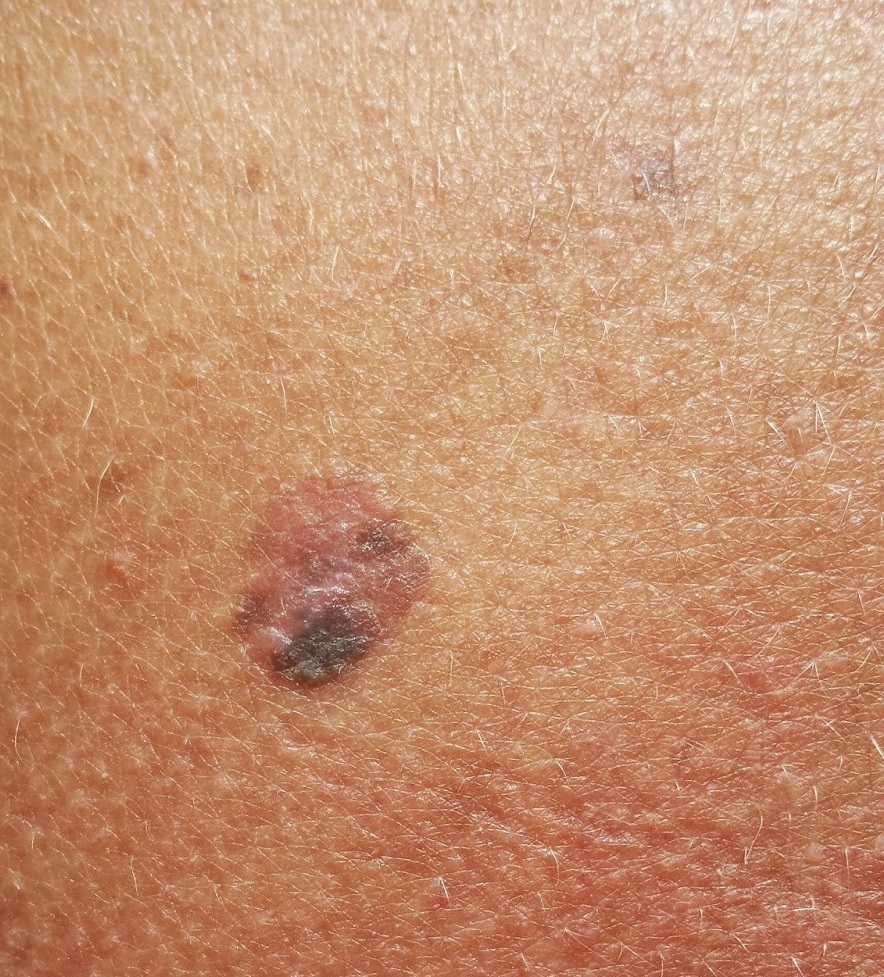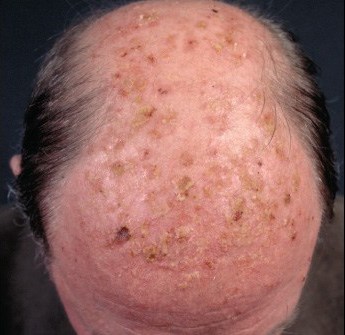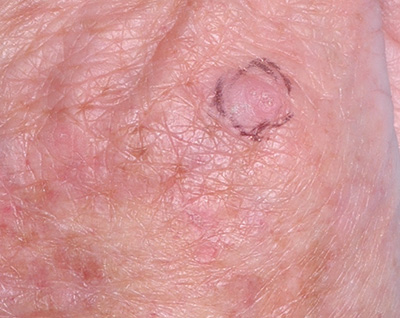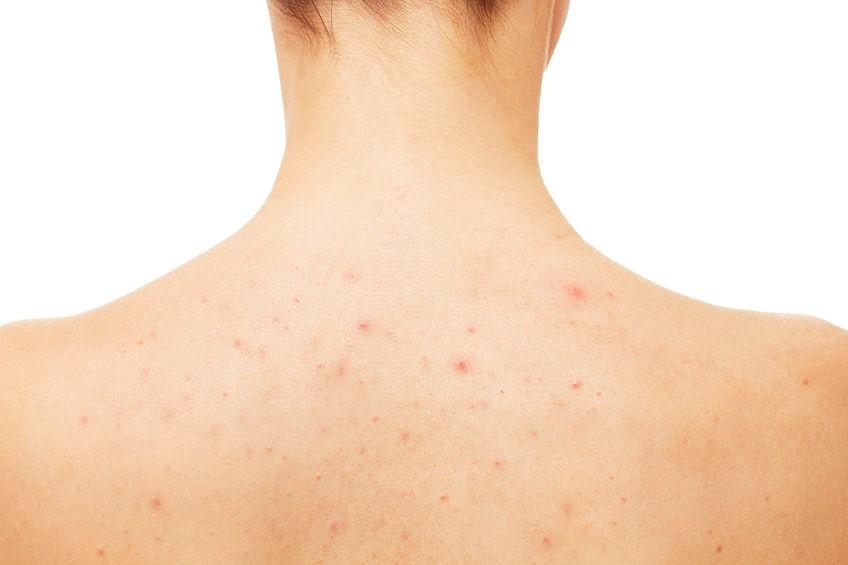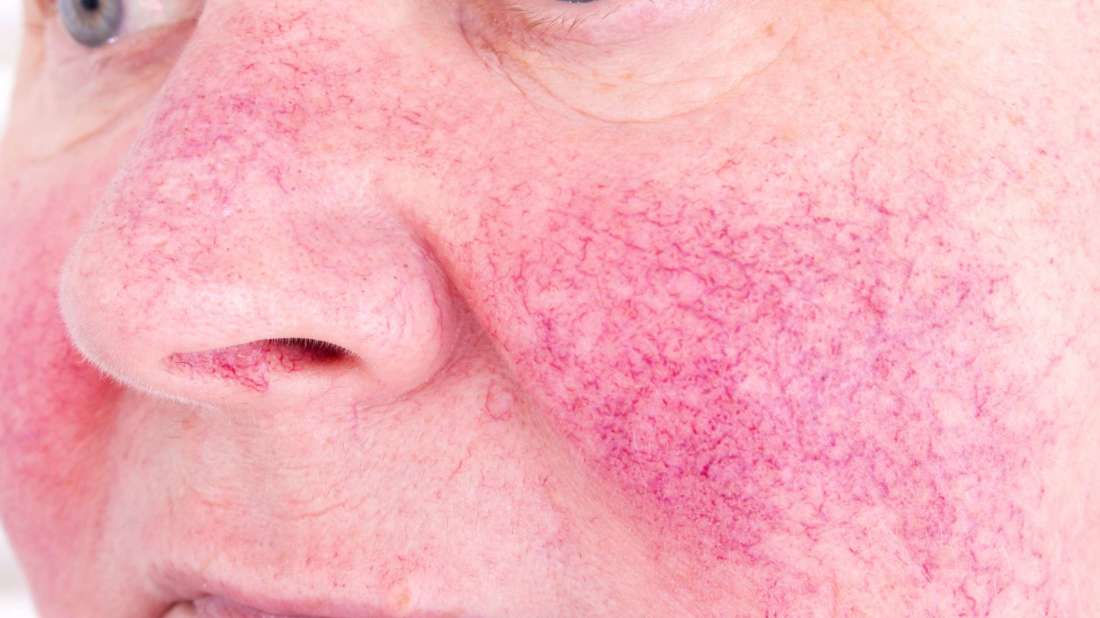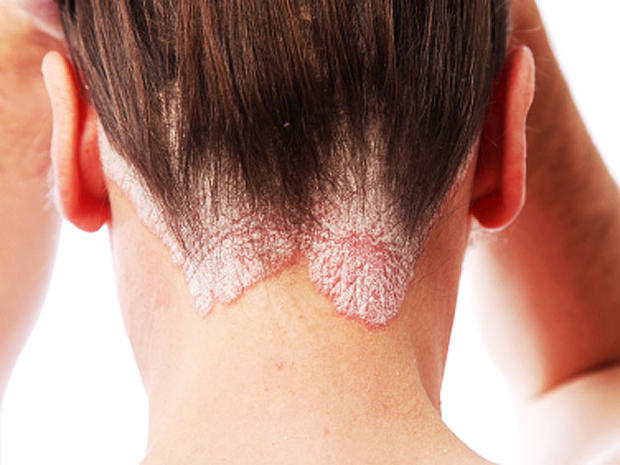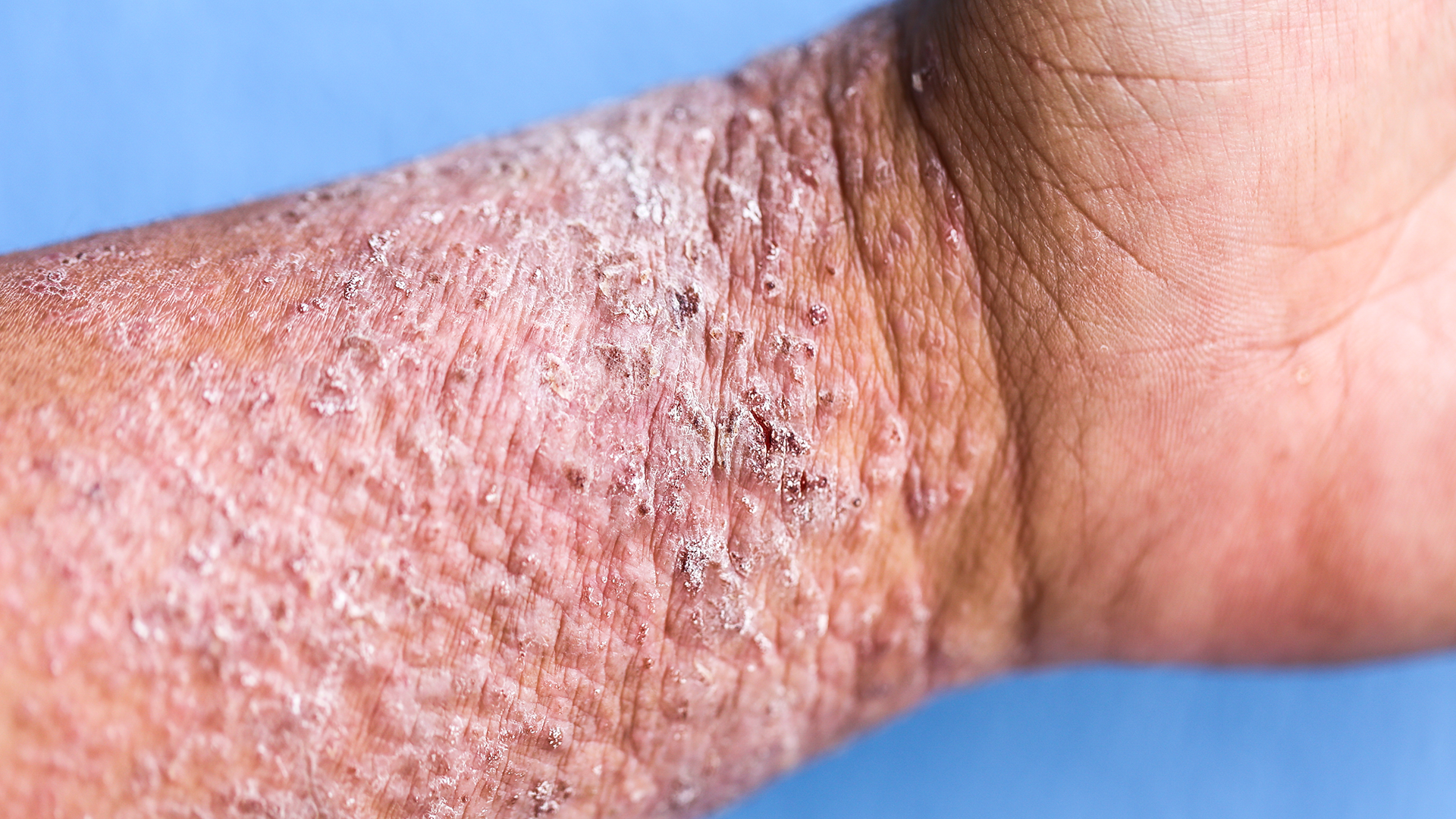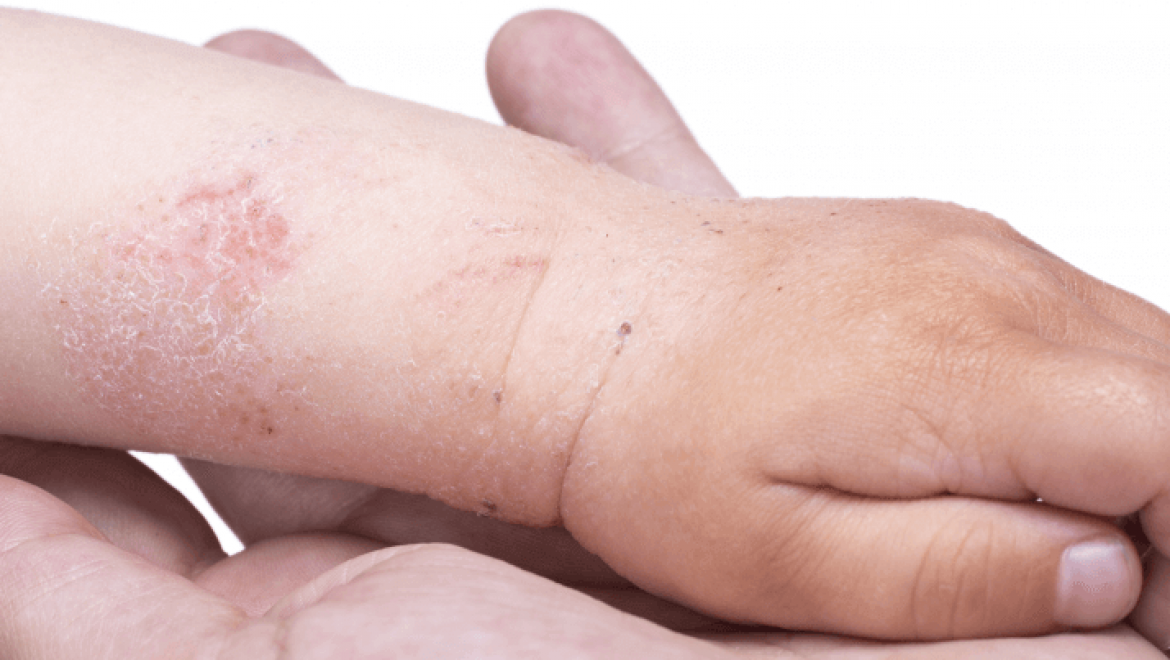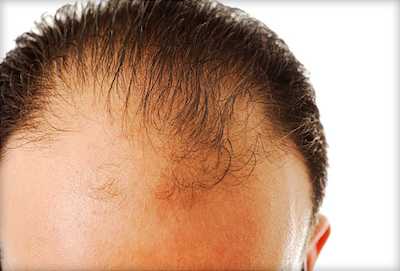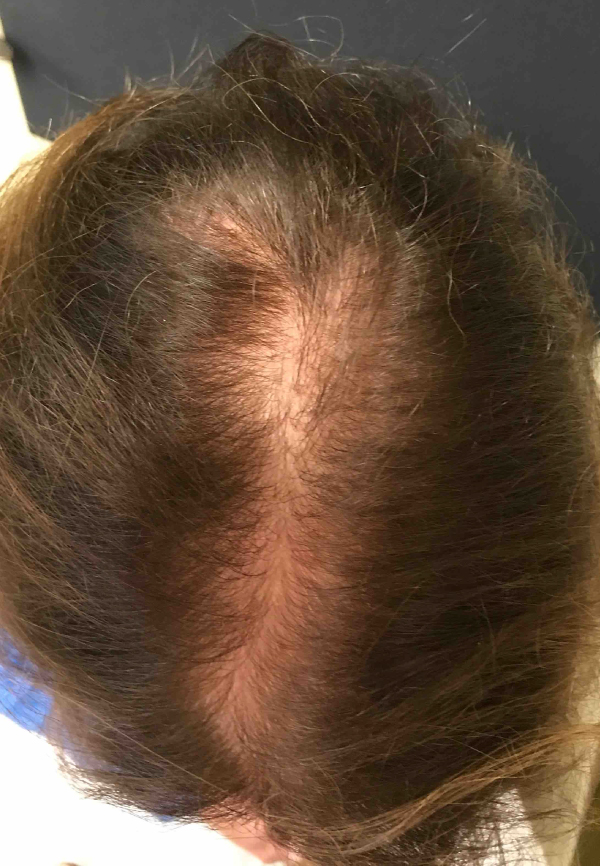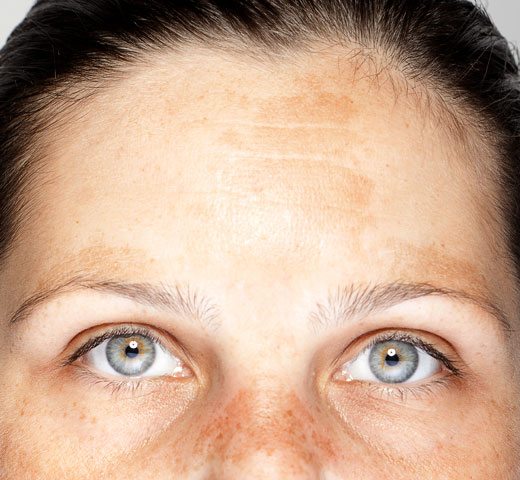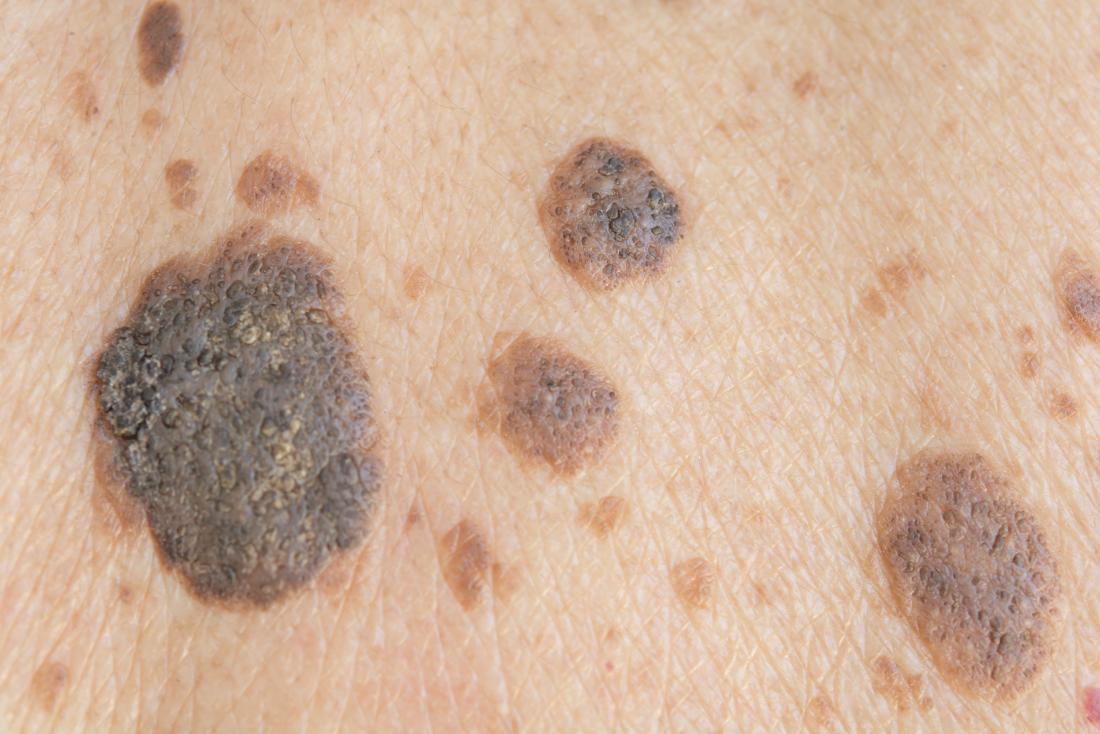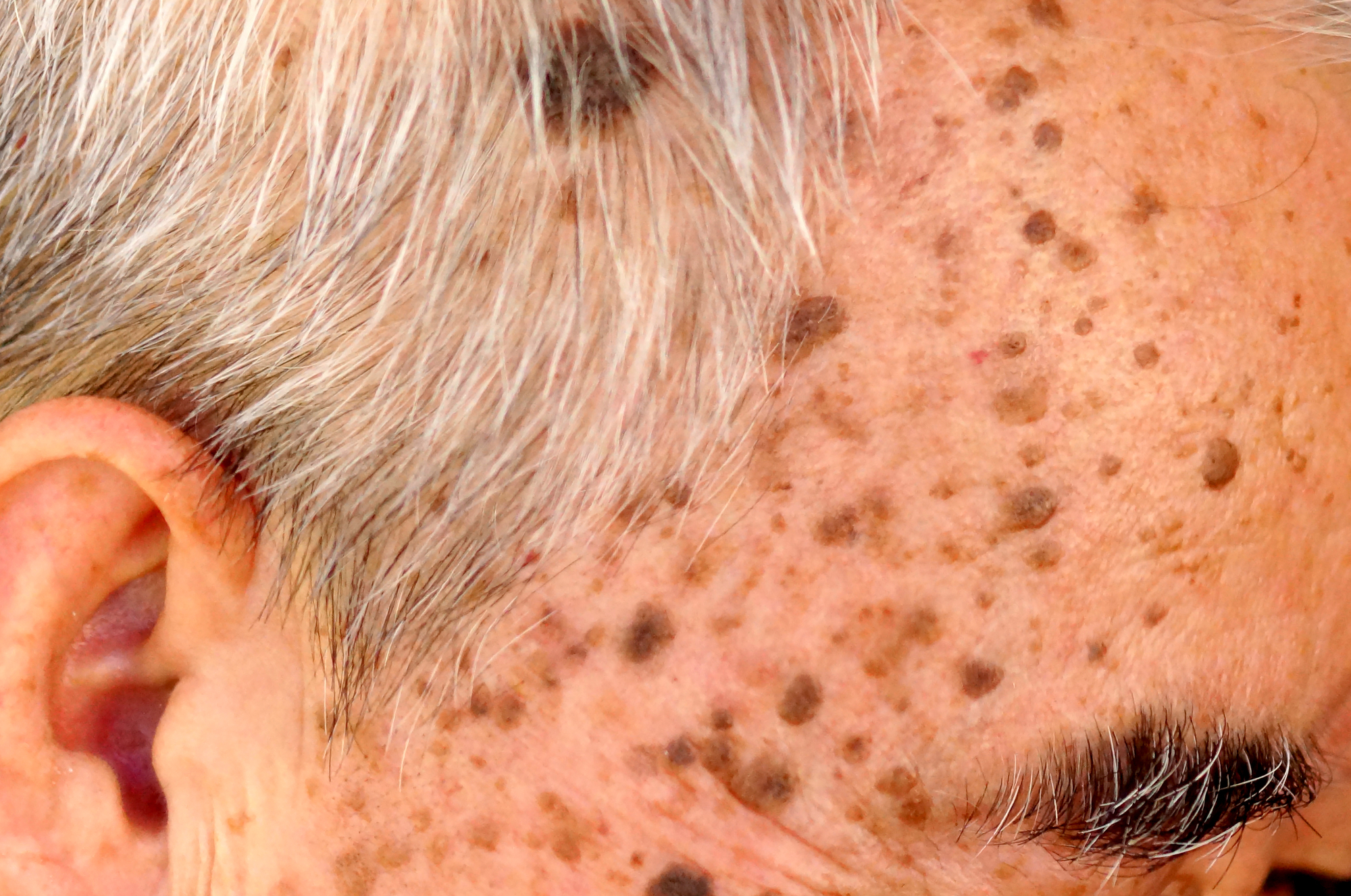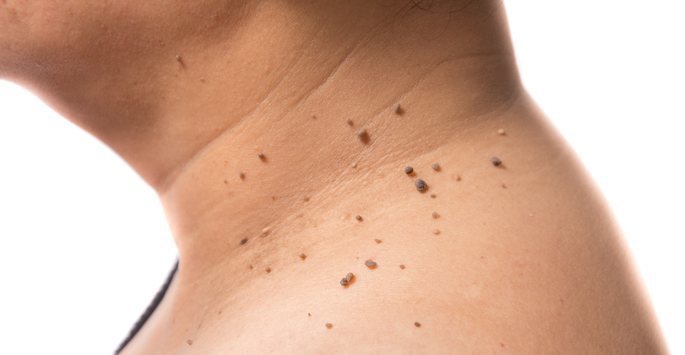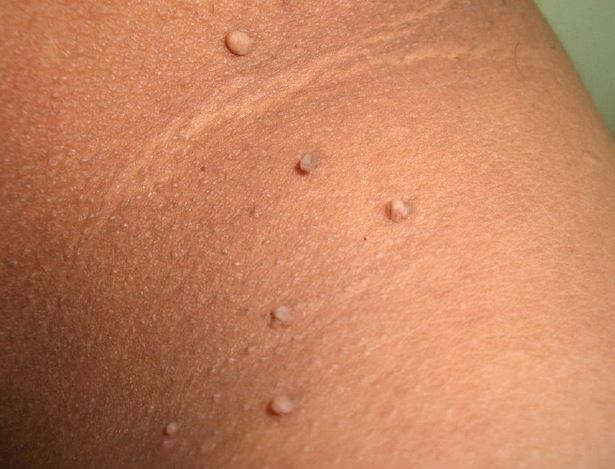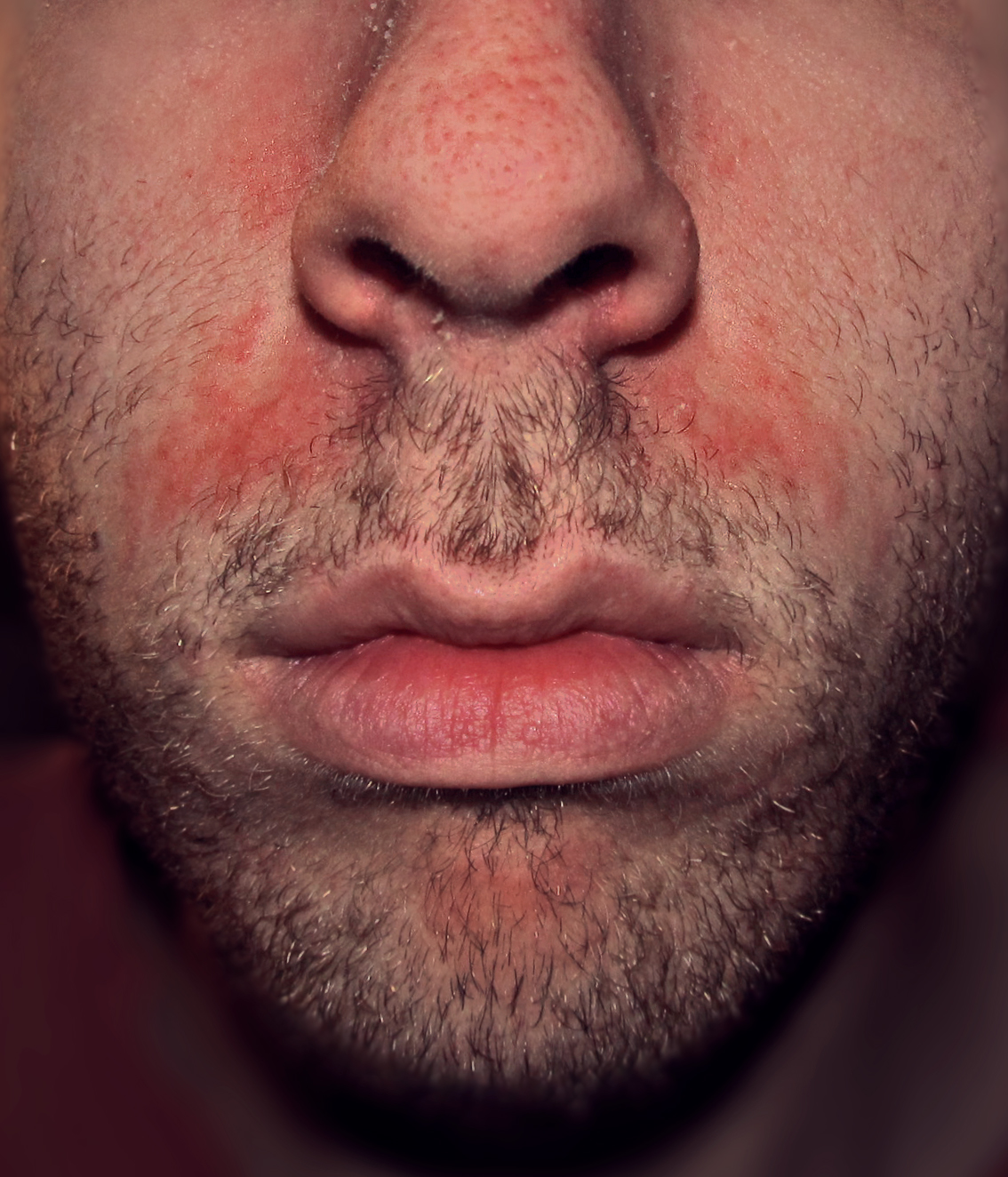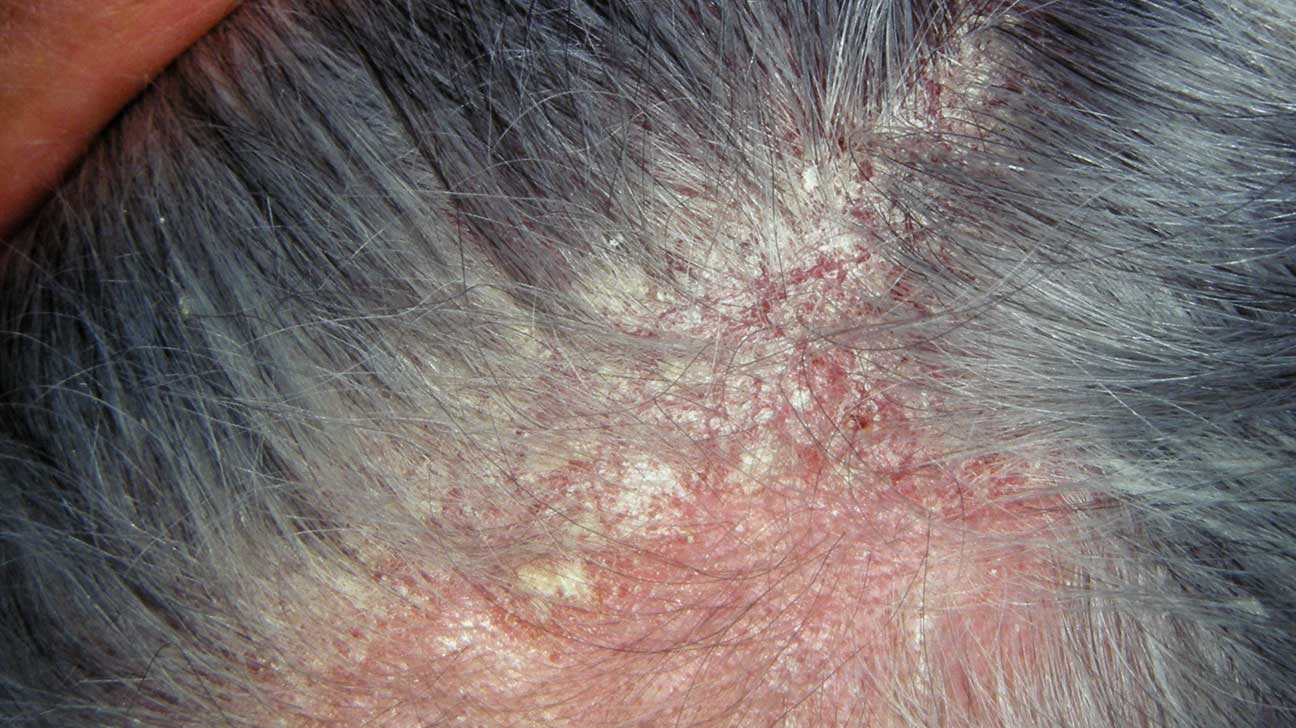Skin Conditions
Sometimes it is easy to identify irregularities in your skin and other times it requires a trained eye to know what to look for. Dr. Dempsey provides routine skin examinations to help you identify any concerning conditions and implement treatments to prevent the condition from getting worse or returning. Here are some common skin conditions that we see.
Skin Cancer
There are three main types of skin cancer. 1 out of 5 Americans will develop at least one during their lifetime.
Basal cell carcinoma is the most common type of skin cancer and often appears as a “pearly” bump. This means a bump that has a pearlescent shine. They may also show up as a pimple or a bug bite that isn’t healing and sometimes they look like scaly patches.
Squamous cell carcinoma is the 2nd most common form of skin cancer and usually appears as a rough, scaly patch that may look like eczema or ringworm. It can also present as a rapidly growing bump and can even develop in a long standing burn or scar.
Melanoma is the least common of the three but potentially the most deadly. It can develop within a preexisting mole or on previously normal skin. It can look many different ways and typically just starts as a spot- smooth and flat but changing. It may be tan, pink, black, gray, brown or white. It can occur on areas of the skin that have never seen the sun and may even occur in the eyes, mouth or genital regions. Melanoma rates are increasing and over 12,500 new cases were diagnosed last year. 2,250 people died of melanoma last year. It is the most common cancer in women ages 25-29. It is very important to check your skin regularly and see a board-certified dermatologist if you have any changing spots.
Actinic Keratoses
Actinic keratosis are considered pre-cancerous growths and the earliest stage in the development of skin cancer. They are caused by long-term exposure to sunlight. The typical one looks like a dry, scaly, and rough skin-colored to reddish-brown bump. They are commonly found on sun-exposed skin, such as the face, ears, scalp, backs of the hands and forearms. They can progress to squamous cell carcinoma.
Treatment options: Freezing or cryosurgery is the most common treatment. Prescription topical treatments can also be used, particularly if there is a large number of actinic keratoses or a broad lesion. Chemical peels may also be administered in the office.
Acne
Acne is a skin condition that occurs when oil clogs the pores of the face, neck, chest, back or upper arms. It can cause blackheads, whiteheads, pimples and even deeper lumps like cysts or nodules. It may be triggered by bacteria, hormones, and other inflammatory conditions. Acne is very common in teenagers but can happen at any age. It is important to remember that there is no quick fix for acne and not every patient will respond the same. It typically takes 6-8 weeks to see initial results and a combination approach is often necessary.
Treatment options: May consist of creams or gels containing retinoic acid, benzoyl peroxide, salicylic acid or antibiotics. Oral antibiotics may need to be used. Hormonal acne in women may be treated with spironolactone. Severe or refractory cases may need treatment with isotretinoin. Procedural intervention may include professional chemical skin peeling, laser or light treatments. Injection of Kenalog in the office can shrink cystic lesions quickly.
Rosacea
Rosacea is a chronic inflammatory condition characterized by small red bumps, broken blood vessels, flushing and redness. It is most commonly seen on the cheeks, nose, chin and forehead. It is more common in fair-skinned individuals and is often mistaken for adult acne. There is no cure but rosacea can be treated with topical and oral medications, avoidance of triggers, and sun protection.
Treatment options: Depending on the patient and their personal needs, treatments can include topical antibiotics such and metronidazole, topical azelaic acid, or oral antibiotics (tetracycline, doxycycline, minocycline), which can help to reduce papules, pustules, and mildly improve redness. Intense pulse light can be used to treat background redness. It is also very important to avoid the triggers of rosacea: Sun exposure, emotional stress, hot weather, wind, heavy exercise, alcohol, spicy foods, hot baths.
Psoriasis
Psoriasis is a very common chronic inflammatory condition. Typically, psoriasis appears as patches of raised, reddish skin covered by silvery-white scale, usually on the elbows, knees, lower back, and scalp. Although currently there is no cure for psoriasis, we have many treatment options that can improve psoriasis.
Treatment options: Can involved topocial, oral and injectible medications depending on the type and severity of the disorder. Phototherapy and light treatment is also quite effective.
Eczema
Eczema is a condition that makes the skin red and itchy. It can affect all ages and have many different causes. Sometimes eczema is hereditary. Sometimes it is developed as a result of contact with allergens or irritants.
Treatment options: Topical steroids, Elidel, Protopic, Eucrisa, pills or injections and biologic therapy are a few of the main treatments used to combat this condition.
Hair Loss
Hair loss is simply the loss of hair where it is desired. It is most commonly associated with the scalp but can involve eyebrows, eye lashes and in some cases, the entire body. This is one of the more complicated problems that Dr Dempsey treats, as there are numerous different etiologies and diseases that result in hair loss- all of which require a board-certified dermatologist’s expertise to diagnose and determine appropriate treatment plan
Treatment options: Treatment is based on the individual’s type of hair loss but may consist of over the counter minoxidil solution, topical steroids, oral antibiotics, immunosuppressive medications or injections of steroid directly into the areas of hair loss.
Melasma
Melasma is a common skin condition presenting as brown patches on the face. It is caused by sun exposure and hormones. The most common sites of involvement are the cheeks, bridge of nose, forehead, and upper lip. Dr. Dempsey sees several cases of melasma daily, it is a very common problem on the Gulf Coast.
Treatment: The most important treatment is sun protection with a board-spectrum spf of at least 30 daily and a wide-brimmed hat. Dr. Dempsey recommends investing in a daily sunscreen that also protects against heat and high energy visible light. Bleaching creams with or without hydroqinone may be recommended. Alpha-hydroxy acid, Retin-A, tranexaminc acid, azeleic acid, and kojic acid also have been shown to be helpful.
Seborrheic Keratoses
Seborrheic keratoses are very common, harmless growths that eventually affect everyone. They are typically slightly raised and have a warty surface. They may be brown but can range from white to black and can mimic skin cancers in their appearance. Because they are benign, they often do not need treatment. If they are bothersome, irritated or inflamed, they can be removed by freezing or scraping.
Skin Tags
Skin tags are very common benign skin growths that look like small, soft/fleshy bumps of hanging skin. They tend to occur on the neck, armpits, groin folds, under breasts, and eyelids. A person may have anywhere from one to hundreds of skin tags. Although skin tags are harmless and usually do not need to be treated, they can be annoying or undesirable cosmetically. We can easily remove them by cutting them off or freezing with liquid nitrogen. Removing them will not cause more tags to grow. Rather, most people will continue to develop new skin tags periodically.
Seborrheic Dermatitis
Seborrheic dermatitis is a common, chronic condition that occurs in the scalp, eyebrows, ears, nose, and chest. This rash is commonly known as dandruff. It is not contagious. It is chronic and cannot be cured but we have many different treatments.


